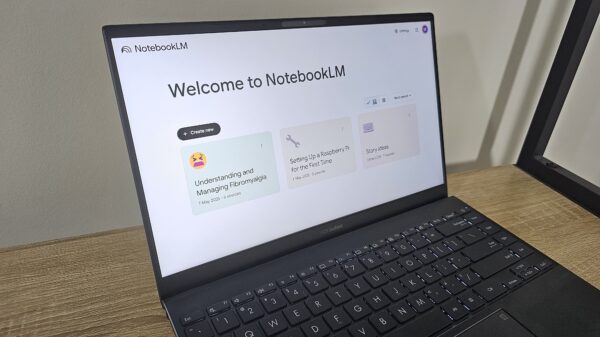In today’s rapidly evolving business landscape, companies face an imperative to innovate or risk obsolescence. Conventional corporate structures often prioritize stability over creativity, stifling fresh ideas and leading to missed opportunities. As noted by Teresa M. Amabile from Harvard Business School, “Creativity has always been at the heart of business, but until now it hasn’t been at the top of the management agenda.” This oversight highlights a critical need for organizations to embrace creative thinking as a core aspect of their operations.
Organizations frequently create environments that discourage exploration. Processes, reporting lines, and lengthy approval cycles can render innovation feel risky or unattainable. Ironically, adhering to “safe” ideas may be the most dangerous approach in today’s competitive market. To stay ahead of potential disruptions, businesses must cultivate creativity not as a luxury, but as a daily practice.
Reframing Problems for Creative Solutions
When faced with challenges, many professionals instinctively seek immediate solutions. Yet, as Titania Jordan, Chief Marketing Officer of Bark Technologies, asserts, the initial interpretation of a problem rarely captures the true issue. She suggests that reframing the problem can reveal underlying opportunities. For instance, instead of asking, “How do we increase email click-throughs?” consider asking, “Why aren’t customers opening emails at all?” This shift can lead to innovative solutions that might otherwise go unexamined.
Encouraging teams to brainstorm alternative perspectives can generate fresh ideas. A mere ten-minute session to discuss various angles could uncover previously overlooked opportunities.
Learning from Other Industries
Innovation often springs from ideas borrowed from outside one’s industry. Dr. Manjula Jegasothy, Co-Founder of MiamiMD, emphasizes the value of cross-pollination: “Innovation often comes from translating solutions that already work somewhere else.” By observing processes in different fields, businesses can identify solutions that competitors may overlook.
To foster this practice, companies should encourage employees to engage with diverse industries through newsletters, seminars, and networking. Maintaining a shared document to compile inspirational ideas can be beneficial during strategy sessions.
Challenging Unwritten Rules
Many corporate “rules” are simply unspoken traditions that hinder innovation. Emily Greenfield, Director of Ecommerce at Mac Duggal, points out that organizations often mistake habit for necessity. By questioning these invisible barriers, companies can unlock new ways of operating.
Choosing one routine to evaluate each month can lead to significant improvements. For instance, a team might test whether weekly reports could be replaced with more streamlined dashboards. Sharing the results of such experiments can motivate others to reconsider their routines.
Leveraging Constraints for Creative Growth
Contrary to the belief that creativity thrives on abundant resources, it often flourishes under constraints. Daley Meistrell, Head of Ecommerce at Dose, explains that limitations can sharpen focus and drive innovative thinking. Defining constraints as challenges can inspire teams to devise inventive solutions.
For instance, a brainstorming session could explore what ideas could emerge with a budget of only $500. Such exercises encourage a mindset shift from scarcity to possibility.
Harnessing Collective Intelligence
Creativity is significantly enhanced when diverse perspectives come together. Justin Soleimani, Co-Founder of Tumble, suggests that teams with varied experiences produce ideas that no single person could generate. To capitalize on this, companies should structure collaboration to facilitate the sharing of ideas from all team members.
Utilizing digital tools for anonymous idea submissions can help ensure that each voice is heard. Encouraging dissent and fostering a culture where different opinions are welcomed can further enhance creativity.
Prototyping and Experimentation
Traditional presentations often fail to convey the potential of innovative ideas. In contrast, prototypes—whether rough sketches or basic mockups—can effectively communicate concepts and reduce the perceived risks of experimentation. Shaunak Amin, CEO and Co-Founder of Stadium, highlights the importance of making ideas tangible: “Prototypes de-risk bold ideas because they shift conversations from theory to reality.”
Keeping prototypes lightweight and presenting them in small forums allows for manageable feedback and reduces the stakes associated with failure. Early demonstrations can quickly reveal whether an idea has merit.
Fostering a Habit of Curiosity
Cultivating creativity requires a continuous influx of new ideas and experiences. Brianna Bitton, Co-Founder of O Positiv, emphasizes that curiosity fuels creativity. By exposing themselves to unfamiliar concepts, individuals can enhance their ability to connect disparate ideas.
Encouraging curiosity as a daily practice—through diverse reading, following industry leaders, or experimenting with new tools—can yield significant benefits for both individuals and teams.
Communicating Ideas Effectively
Even the most innovative concepts can fail if they are not communicated compellingly. Erin Banta, Co-Founder and CEO of Pepper Home, notes, “People don’t rally behind ideas. They rally behind stories that make those ideas feel urgent and achievable.” Framing ideas within a relatable narrative can increase stakeholder engagement.
When presenting, start with the human problem at stake rather than the technical solution. Use real-world examples and visuals to make abstract ideas more relatable and impactful.
Overcoming Creative Blocks
Despite the best efforts, teams may occasionally encounter creative stalls. The key lies in knowing how to reset. Taking a break can provide a fresh perspective on entrenched problems. Kit Ng, General Manager of RedWolf Airsoft, notes that “creative breakthroughs often happen when the mind is at rest.”
Switching formats or inviting an outsider to offer fresh insights can also help reinvigorate stalled discussions.
The business landscape is evolving, and organizations that prioritize creativity will be better positioned to thrive. As Charlene Walters, PhD, emphasizes, “To become more creative, we just need to practice: it’s like exercise.” By embedding creativity into their culture, businesses can adapt to changes and drive innovation rather than merely react to it.








































































